Doomsday is coming. The power grid may fail, the grocery stores will empty, and your neighbors will be looting. You could be looking at a post-apocalyptic wasteland in the near future. There’s no telling when or what could happen, but you can prepare for the worst.
Stockpiling supplies is a good way to ensure our survival during uncertain times or when SHTF. The question is, what should you stockpile for SHTF?
We all have our own needs and wants when it comes to stockpiling food and supplies that could mean life or death. This guide will help you determine the best and most essential items to stockpile in preparation for the worst!
What To Stockpile?
You should or can stockpile several items and supplies as a prepper. Obviously, you have to start with the most important supplies you will need to survive.
What supplies or items are crucial to our survival? We believe food and water are the most essential items you need to keep in your bunker.
There are many other items worth stockpiling. Below is a comprehensive list of items to cover all your bases in your bid to stockpile for SHTF:
Food
As mentioned above, food is something you can’t miss out on. Food will keep you alive, while its lack can lead to starvation, which has many different implications for the body, such as losing appetite, nausea, weight loss, or even death!
It is also important because, without any sustenance, a person will only be able to live for about three weeks before their immune system starts breaking down.
There are a lot of options for you to choose from. You can stockpile fresh food from grocery stores, canned food, MREs (Meal, Ready-to-Eat), and emergency rations such as candy or protein bars.
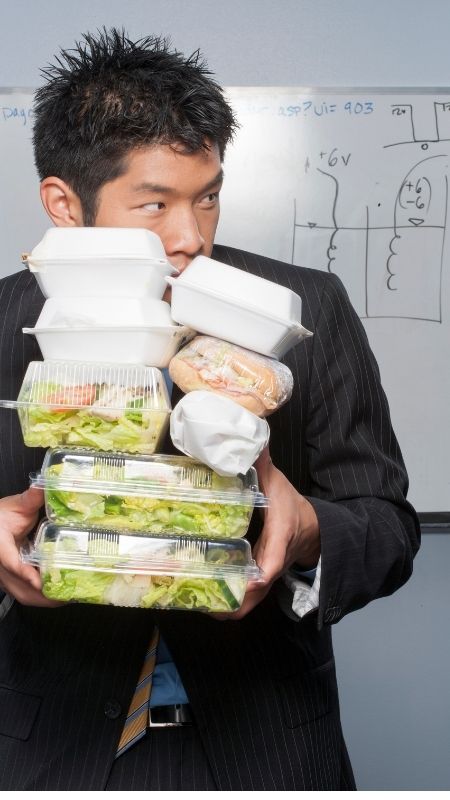
The above options can be grouped into three distinct groups as far as stockpiling for SHTF is concerned:
Perishable Foods
Perishable food can’t be stored for an extended time without refrigerating or frozen and must be consumed within a few days. This group includes fresh produce (fruits and vegetables), dairy products, eggs, fish/shellfish, cooked leftovers that are not properly packaged in the refrigerator or freezer to ensure they do not spoil before consumption.
Perishable food cannot survive for an extended length of time without some form of preservation technique such as refrigeration and freezing.
We don’t recommend stockpiling perishable foods. Stocking up on perishable items could cause them to spoil; when this happens, you’ll have wasted money and food that’s no longer safe to eat.
Semi-perishable Foods
Semi-perishable foods are fresh foodstuffs that do not need to be refrigerated but only last for days or weeks before they spoil. Despite their durability, you need to store them properly unless you want them deteriorating much faster.
They include:
- Bread and baked goods
- Some cheeses (e.g., cream cheese)
- Dry pasta dishes with sauces that don’t require refrigeration such as spaghetti aglio olio or macaroni salad
- Processed meats like salamis or ham slices which have already been cooked once at the factory and just need heating up when you buy them in the grocery store’s deli section
Semi-perishable foods are a welcome addition to your bunker or garage. However, they may not be ideal if left out of the refrigerator for an extended period. Thus, they are not suitable as a long-term survival option!
Perishable Foods
Perishable foods are foods you can store without spoiling, such as canned foods. Non-perishable foods have been a staple in the diet of many cultures throughout history; some non-perishables like rice were even cultivated about ten millennia ago!
They include:
- Canned foods such as meat, stews, fruits, veggies, beans or fish
- Dried rice, fruits, veggies, beans and milk
- Pasta
- Cereal
- Oatmeal
- Tea bags
- Peanut Butter
- Juice Boxes
It goes without saying but let’s just put it out there. Perishable foods are the best stockpile for emergencies, tragedies, or SHTF.
Non-perishables are a worthy investment as they can last for a long time in your storage facility before and after tragedies occur. This benefit is especially true if a hurricane or flood caused the disaster and your home’s electricity has been knocked out.
Water
Human beings can’t survive for more than three days without water. It will be pretty hard to stay when tragedies strike if you don’t have some water stored away.
In a natural disaster or other emergencies, it is vital to be prepared with enough water. Depending on the severity of the situation, you may not have access to drinkable water for days. Here are some tips to help you stock up on an emergency supply of drinking water:
- Store at least one gallon per person for three days in sealed plastic containers and replace every six months.
- Fill your bathtub, sinks and buckets with water and store it in clean garbage cans if you don’t trust your water supply in case of a flood or other contamination. Include bleach if you live in an area with a high risk of contamination.
- Keep at least two gallons of extra drinking water in your car at all times
Storing water is a vital step in any emergency preparedness plan. You can keep your water in plastic bottles, such as soda, juice, or glass jars.
It may seem daunting when you’re getting started, but it doesn’t have to be. The best way to get started is with a plan. Start small by collecting a few cases of 24-ounce water bottles, which can go a long way to meeting your basic needs.
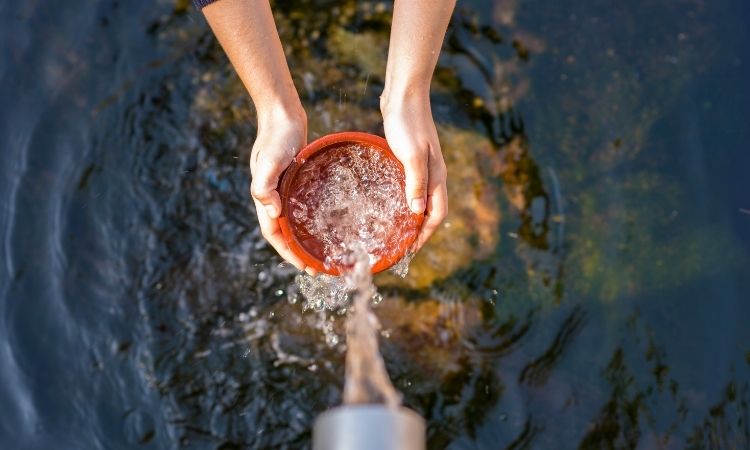
It is essential always to rotate your stored water supply at least twice a year to keep your supply fresh. Clean and sanitize the containers before use. It is also recommended that you store various containers for storing water. If one type of container becomes unusable, you have others on hand to use instead.
That said, what happens if your stored water runs outs and you still don’t have access to normal water suppliers? Will you die of thirst after three days?
Fortunately, you don’t have to wait for your death if you are well prepared. Besides storing water, you can get water purifiers and filters that will clean or purify filthy water for you to drink.
There are so many options here, you can’t go wrong with either one. There are portable lightweight purifiers that will purify water from a mud puddle while on the go. Additionally, you can also get purifiers suitable for a whole household.
Whichever route you take, water purifiers or filters are handy and may just be the secret sauce to surviving in a harsh world.
Common and Specialized Batteries
It doesn’t matter if you live in a city or the countryside, many everyday things require batteries. When disaster strikes and you’re left without power for weeks, keeping your devices charged can be a challenge. So how do you prepare for this eventuality? You stockpile batteries!
You might not know this, but a single battery can power your flashlight for 12 hours. In other words, it’s not just essential to have enough food and water in case of SHTF—you need to stock up on batteries too! Batteries are necessary for powering devices like radios, flashlights, walkie-talkies, etc. Plus, today’s cellphones and computers require them.
If you live in an area prone to severe weather like hurricanes or tornadoes, you should always have a supply of batteries on hand in case of emergencies.
What Kind of Batteries Should You be Stockpiling?
There are three primary types of batteries that you need to stockpile for SHTF:
- AA
- AAA
- D cells
AA and AAA batteries are used in most household and office electronics. The AA battery is often used in handheld flashlights, while the AAA battery is typically found in smaller devices like remote controls or headphones.
The D-cell battery is commonly found in powering various devices like radios, walkie-talkies, and more.
It would help if you also were stockpiling rechargeable batteries and single-use batteries. A great way to get started is by purchasing rechargeable AA/AAA batteries and stocking up on D-cell alkaline batteries to use in your radios or any device that requires them.
Batteries will be a good batter item in post SHTF where the grid goes down indefinitely. Stockpiling batteries will place you in a good position to get or negotiate for things you’d want in terrible times!
Toilet Paper

One thing that is a must-have when disaster strikes? A stockpile of toilet paper. Toilet paper is one of those things that you can never have enough of and stores will be one of the first to run out in a major emergency.
Unless you are an alien, you’re pretty much familiar with what happened in stores during the pandemic. We saw people filling trolleys with toilet paper or other essential items. It didn’t take long for the stores’ shelves to empty.
Trust us, you don’t want to get caught up in that ever again. Since you know better, it is best to stockpile toilet paper as part of your disaster preparations.
The basics are always a good idea to have on hand in the event of an emergency. While you may have food, water, and other essentials, toilet paper may be one of the first things to go once stores run out!
How do you go about stocking up on toilet paper for SHTF? Well, here are a few tips on that:
- Buy in Bulk– Buying in bulk is one way to ensure that you are getting the best deal for toilet paper. Also, it’s a good idea to invest in a large container so that you can refill when you run out.
- Stock up when stores offer discounts– Stores like Target often offer deals on toilet paper, especially at the beginning of each year. Take advantage of these deals and buy as many bundles as possible.
- Find coupons– Coupons for toilet paper will usually only last for a limited time but they can be found if you look hard enough! Coupons can save you money when buying from your local supermarket or even online.
Lighters and Matches
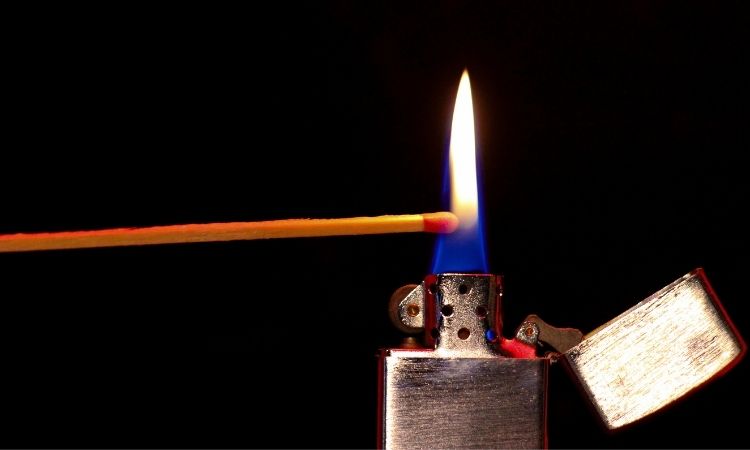
Lighters and matches are items often forgotten by preppers. We don’t blame them either. However, if you’re going to stockpile food, you need a way to prepare it.
Lighters and matches are a good source of fire, especially in an environment where the fight to survive is tougher than we are used to. With a good source of fire, you can prepare food and have a source of heat and light when you need them. You will absolutely need them!
Stockpiling lighters and matches is never a bad idea. Keep a few in your car, home, bunker, and bug-out bag. The peace of mind you get from being prepared for anything can be priceless!
To keep your lighters and matches in good condition, store them in a dry place with high air circulation that is free of chemical fumes. You want to keep them out of the sun and away from places with extreme temperature variations.
Generators and Other Sources of Electricity
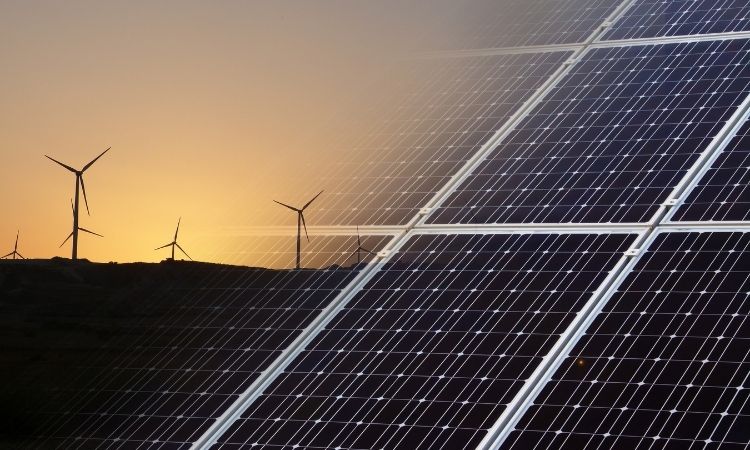
When the grid goes down, you’ll need an alternative source of electricity for your household usage. The need for alternative sources of electricity is amplified by our rising dependency on electrical devices and appliances.
So how can we keep our lights and devices on when tragedy or apocalyptic events strike? Well, we have four alternative sources of electricity that may serve you well in a total power outage. They include:
- Generators
- Solar panels
- Wind Turbines
- Water-Powered Generators
Generators
Generators are an important tool to have in your emergency kit. They produce electricity from fuel that you can store for emergencies.
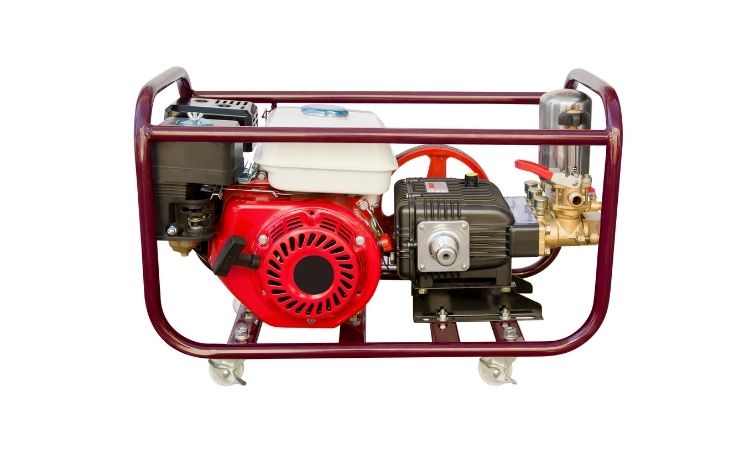
There are two types of generators:
- Standby Generator – they are a good choice for those who want to be prepared for an emergency. If your power goes out, it will automatically turn on and power your home. The downside is that these generators are expensive, so the upfront cost will be high.
- Portable Generators – they are the most popular type of generator. These generators can run on propane, gasoline, natural gas, or fuel oil. Portable generators are a cost-effective and efficient way to provide electricity during an emergency. Portable generators allow you to continue using crucial electronics and appliances, even during a power outage. They weigh about 30 kg and are about 80 cm tall. The downside is that they need to be refueled every few hours of use.
Portable generators are the most common type of generators in use today. They are common largely due to how economical and efficient they are for small-scale power generation.
If you plan to get a portable generator as part of your prepping plan, ensure you have fuel accounted for. Despite being economical, it can only run for a few hours before it needs a fuel refill. In short, you have to stockpile some fuel if you get one of these in preparation for SHTF.
Solar Panels
When you hear the words “solar panels,” you may think of large, bulky industrial installations. However, in recent years, solar power has become more accessible and versatile. Solar panels are now a viable option to power your home off-grid during a disaster or emergency.
Solar power is one of the most valuable ways to stay on the grid during a power outage. It is an affordable, sustainable and clean way to power your home during an emergency. A solar panel can provide you with adequate electricity for your home during an emergency situation and it’s also a great way to lower your monthly energy bills.
The main advantage of solar power is that there is less maintenance required for solar panels than any other type of generator. You don’t have to worry about storing fuel or getting it delivered when SHTF because all you need are some rays from the sun!
Solar power is not without its downfalls. Solar panels are expensive, so it will take a long time to make up for the cost of the initial investment. You also need a lot of space to store solar panels and keep them from being damaged.
Wind Turbines
What’s the wind all about? Wind power is a natural energy source that isn’t as readily available as solar and water power, but it does have its advantages. It’s an important source for those who live in rural areas because there are fewer homes blocking the path of the wind.
A wind turbine harnesses the power of the wind and converts it into kinetic energy. This energy can then be used to generate electricity that can power your home and charge your devices, even during natural disasters. These machines are efficient, relatively inexpensive, easy to maintain, renewable, and environmentally friendly.
When it comes to reliability, wind power is usually a safe bet. Not that there haven’t been some failures in the past, but they’re few and far between. That being said, if you plan on using wind power as your primary means of electricity generation, you’ll need to make sure you have plenty of space for this resource.
Water-Powered Generators
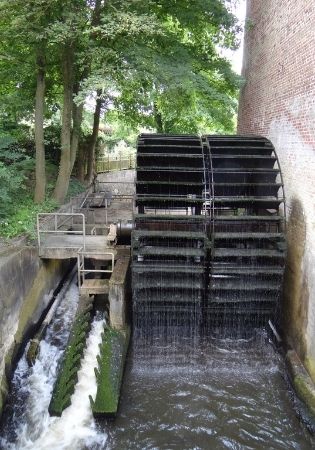
Water-powered generators are an interesting way to keep your home powered. They’re completely self-sufficient and do not require any special installation or wiring. They can be used in remote areas as well as urban areas, which is nice if you need a generator that isn’t too loud for your residential neighborhood.
The downside is they are slower than other generators, so they might not work if you need a quick fix. But if you want a power source that’s easy and self-sustaining, water-powered generators might be the right choice for you!
The best way to generate electricity post-SHTF is to have multiple sources of power. You can never have too much power. The above alternative sources of electricity are all viable sources of energy you can rely on during power outages.
Guns and Weapons
Many preppers acknowledge the need to protect themselves in post-apocalyptic events. When anarchy reigns, you’d be mad not to arm yourself.
Imagine being the guy with everything you need to survive in a post-SHTF world where the majority if not everyone is fighting and looking for resources to survive. What do you think would happen?
Again, you’d be insane to think you’d fair alright in such a situation. As preppers, our survival supplies and items make us a target when others would desperately need the same to survive. Therefore, as you plan for your survival, you’d better plan how to protect your stock, family, and yourself from mobsters and looters.
The best way to protect yourself is by acquiring some self-defense guns and weapons. The best way to protect yourself is by acquiring some self-defense guns and weapons. Guns are defensive firearms while weapons can include knives, tear gas grenades, pepper spray cans, tasers, and batons.
There are many different places to buy guns and weapons that are legal. You can go to a gun show, purchase from a dealer or through a website, or you can also find dealers on social media.
The best place to start is by asking around your local community to see what people have in their homes. For example, check with spouses of law enforcement officers and military personnel to see if they have any weapons in the house that could be sold cheaply.
Next, you want to research the laws of your state so you know what is legal and what isn’t. For example, some states require individuals who sell guns privately to register as gun dealers while other states don’t require this.
It’s important to keep in mind that there are many different types of weapons, not just handguns or assault rifles. Guns like shotguns and pistols are popular for home defense because they’re easy for beginners and offer more firepower than pepper spray or stun guns.
Weapons stockpiling does require an upfront investment but it’s worth the peace of mind knowing that you’re prepared for anything life throws your way!
Final Thoughts
As a prepper, there are a lot of items you can stockpile for use when and after SHTF. The above list is by no means conclusive but it has the most necessary and basic items you need to survive in an apocalyptic world.
Feel free to add items that you feel are essential for you to perform tasks crucial to your survival. You should also do an evaluation and determine the amount of supplies you’ll with respect to you and your family’s needs.
